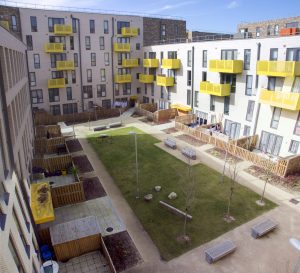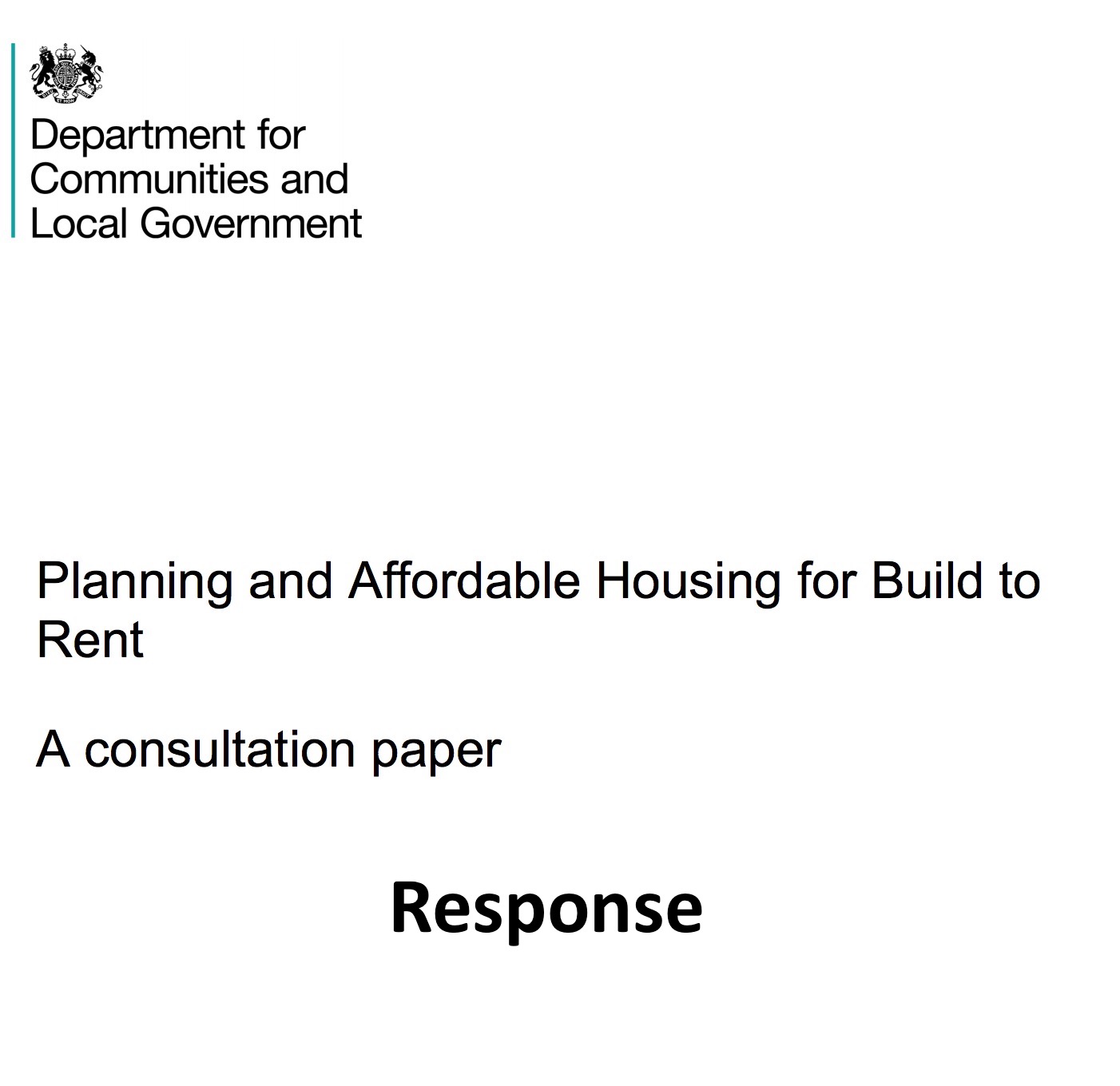Site profile: Fizzy Living
By Rodrigo Peon-Veiga and Katia Habra, LSE MSc Regional and Urban Planning Studies
In 2 012, Thames Valley Housing Association (TVHA) created Fizzy Living, a commercial subsidiary focused on attracting institutional investors with an appetite for investing in the private rented sector (PRS) and who are interested in long-term returns secured through rental income streams. Fizzy capitalised on TVHA’s reputation, skills in property management, and their preparedness to provide £30m capital in initial seed funding to help access additional funds. Currently, Fizzy has raised an additional £200m from Silver Arrow (an investment entity owned by the Abu Dhabi Investment Authority), and secured a further £55m long-term loan from PRICOA (an international private investment arm of the Prudential Insurance Company of America).
012, Thames Valley Housing Association (TVHA) created Fizzy Living, a commercial subsidiary focused on attracting institutional investors with an appetite for investing in the private rented sector (PRS) and who are interested in long-term returns secured through rental income streams. Fizzy capitalised on TVHA’s reputation, skills in property management, and their preparedness to provide £30m capital in initial seed funding to help access additional funds. Currently, Fizzy has raised an additional £200m from Silver Arrow (an investment entity owned by the Abu Dhabi Investment Authority), and secured a further £55m long-term loan from PRICOA (an international private investment arm of the Prudential Insurance Company of America).
The basic idea behind Fizzy Living’s model is to provide the sort of accommodation and services that  should appeal to young professionals at rents they can afford but which generate a reasonable long-term rate of return. Fizzy operates as the landlord and property manager of the private rented accommodation, delivering a personalised service to tenants in brand new, high tech and energy-efficient flats. The standard of management and the quality of the Fizzy units is in stark contrast to the prevailing image of bad landlords renting poor-quality homes. Fizzy collects rents which cover management fees, service and maintenance charges as well as a range of residential amenities tailored to tenants’ needs, such as free broadband, an online tenancy portal, cycle storage, laundry services, furniture rentals, and rentable parking spaces among other things. They offer flexible lease terms ranging from six-month up to three-year tenancies, part of their efforts to develop their image as a “straightforward reliable landlord you can trust”. Indeed, Fizzy tenants have access to their landlord via the “Bobs”, or building managers on-site, who ensure that requests for repairs, maintenance, change of circumstances, etc. are assessed efficiently and that the needs of residents, from whom they gather regular feedback, are met.
should appeal to young professionals at rents they can afford but which generate a reasonable long-term rate of return. Fizzy operates as the landlord and property manager of the private rented accommodation, delivering a personalised service to tenants in brand new, high tech and energy-efficient flats. The standard of management and the quality of the Fizzy units is in stark contrast to the prevailing image of bad landlords renting poor-quality homes. Fizzy collects rents which cover management fees, service and maintenance charges as well as a range of residential amenities tailored to tenants’ needs, such as free broadband, an online tenancy portal, cycle storage, laundry services, furniture rentals, and rentable parking spaces among other things. They offer flexible lease terms ranging from six-month up to three-year tenancies, part of their efforts to develop their image as a “straightforward reliable landlord you can trust”. Indeed, Fizzy tenants have access to their landlord via the “Bobs”, or building managers on-site, who ensure that requests for repairs, maintenance, change of circumstances, etc. are assessed efficiently and that the needs of residents, from whom they gather regular feedback, are met.
 Fizzy’s ambition is to create a sense of place and a safe, friendly community that is attractive mainly to young people, who the company calls “rentysomethings”: employed young professionals, often aged 25 to 35 years old, earning an average income of £35,000. Although rents are market-determined, the lack of agency fees along with the reliability of customer service and the high quality of the housing stock make Fizzy a modern, private type of “social landlord” with lower overall costs to the tenant. Adaptable and flexible, Fizzy is now attracting customers beyond its target population, from downsizing families to single, older adults. Fizzy does not discriminate against new types of customers as long as they are able to afford the rent. One of Fizzy’s schemes for example, a 63-apartment development in Stepney Green, includes one, two, and three bed flats and is occupied by a mixture of tenants living alone, sharers, couples, and households with children.
Fizzy’s ambition is to create a sense of place and a safe, friendly community that is attractive mainly to young people, who the company calls “rentysomethings”: employed young professionals, often aged 25 to 35 years old, earning an average income of £35,000. Although rents are market-determined, the lack of agency fees along with the reliability of customer service and the high quality of the housing stock make Fizzy a modern, private type of “social landlord” with lower overall costs to the tenant. Adaptable and flexible, Fizzy is now attracting customers beyond its target population, from downsizing families to single, older adults. Fizzy does not discriminate against new types of customers as long as they are able to afford the rent. One of Fizzy’s schemes for example, a 63-apartment development in Stepney Green, includes one, two, and three bed flats and is occupied by a mixture of tenants living alone, sharers, couples, and households with children.
Fizzy Living’s strategy is showing promise, and demand is high for their units. At the moment, Fizzy manages four buildings and 246 apartments, with two more recently acquired buildings undergoing renovation. For the first time, they are also seeking planning permission to develop their next scheme from the ground up in order to drive costs down and design flats better suited to customers’ needs.
Fizzy is growing fast, hitting – and exceeding – its targets. Their long-term goal is to develop a  portfolio of 5,000 units nationwide by 2020. The government is encouraging more of this large-scale, institutionally funded PRS development – and Fizzy are not alone in their efforts. Nevertheless, Harry Downes, Managing Director of Fizzy, explains that while institutional investors have the money and willingness to invest in PRS schemes, it remains difficult to compete in the London market against those developing units for owner-occupation. Consequently, Mr Downes argues that “without the capacity to build PRS-only blocks of 30 to over 100 units, private social landlords will not be able to generate adequate returns”. He suggests that s106 be extended to allow for a classification of long term PRS as an alternative to affordable housing. He thinks it is especially valuable because models like Fizzy’s are adding stock to the market without recourse to any form of public funding. Such an approach would however currently require Fizzy to provide below market-rates rents, which is not part of the company’s goals.
portfolio of 5,000 units nationwide by 2020. The government is encouraging more of this large-scale, institutionally funded PRS development – and Fizzy are not alone in their efforts. Nevertheless, Harry Downes, Managing Director of Fizzy, explains that while institutional investors have the money and willingness to invest in PRS schemes, it remains difficult to compete in the London market against those developing units for owner-occupation. Consequently, Mr Downes argues that “without the capacity to build PRS-only blocks of 30 to over 100 units, private social landlords will not be able to generate adequate returns”. He suggests that s106 be extended to allow for a classification of long term PRS as an alternative to affordable housing. He thinks it is especially valuable because models like Fizzy’s are adding stock to the market without recourse to any form of public funding. Such an approach would however currently require Fizzy to provide below market-rates rents, which is not part of the company’s goals.
There is strong evidence of rapidly increasing demand for PRS housing in London. As Mr. Downes puts it: “it’s madness that we are not providing more opportunities for PRS developments despite so much institutional money waiting to come in.” Increasing the supply of new-build, large-scale PRS may not be the solution for addressing the diversity of housing needs in the city, since market-rate PRS is not an “affordable” option by many standards. But it can be a very important part of the solution, both by adding to overall housing supply in London and by increasing the number of better managed, more secure rental options in the PRS, particularly for young professionals.





1 Comments